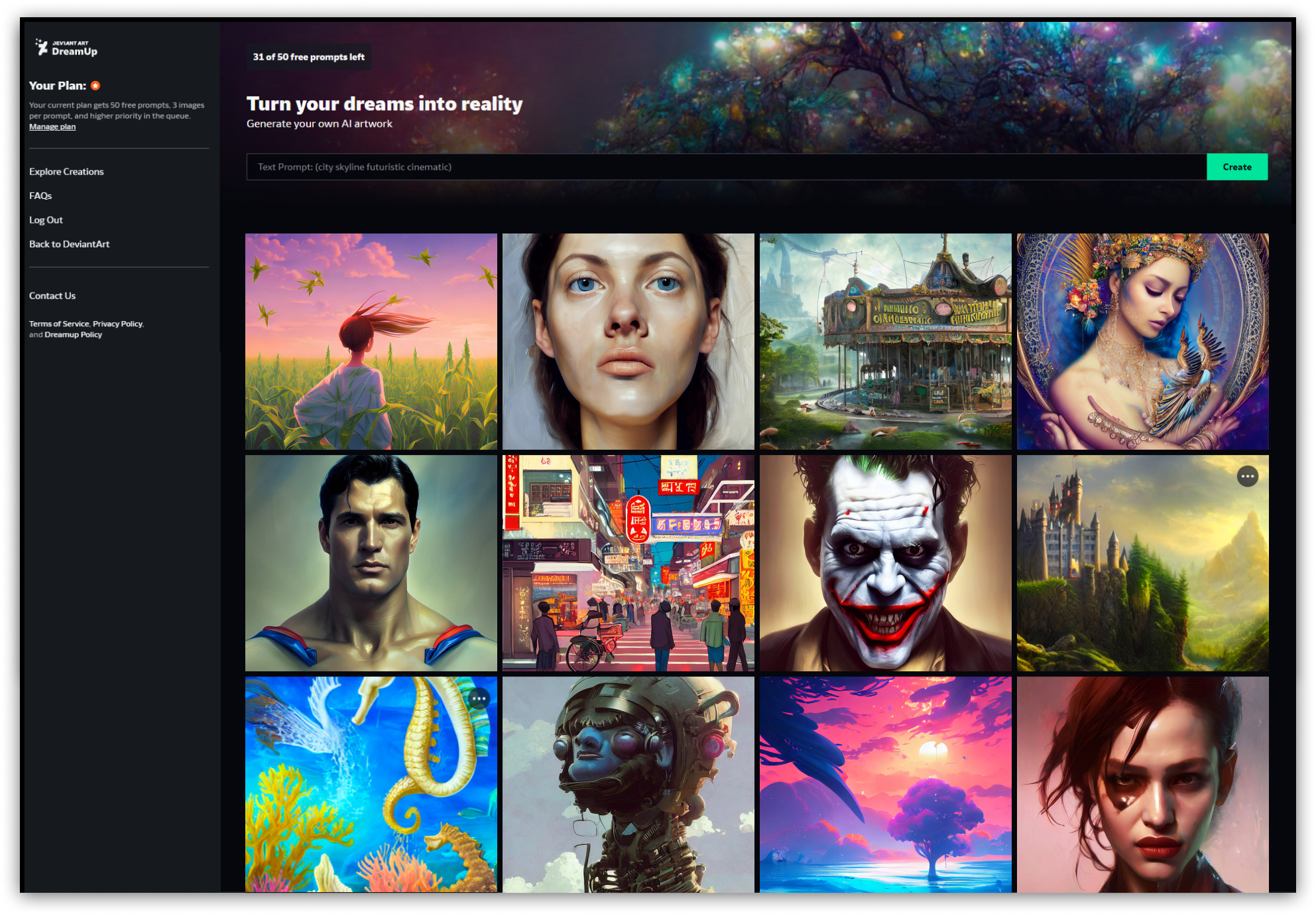Equity drops at 7 a.m. PT every Monday and Wednesday, and at 6 a.m. PT on Fridays, so subscribe to us on Apple Podcasts, Overcast, Spotify and all the casts. TechCrunch also has a great show on crypto, a show that interviews founders, one that details how our stories come together, and more!
Category: TECHNOLOGY
As the economy shifts, what’s the best software customer?
It’s a busy time in tech, with billions of dollars of value incinerated in recent days: FTX is at death’s door, while Twitter, recently sold at a price that no longer made sense once the transaction closed, is either slouching toward insolvency or not, depending on how you vet its new owner’s recent comments.
But while there are a great many shiny things vying for our attention, the larger (and more boring) world of B2B software is going through a fascinating year. Recall that when COVID-19 first swept the world, there was doubt that tech companies would perform well. Those concerns were misplaced; as it turns out, businesses of all sizes still needed tech solutions to run their operations, meaning that while much of the economy suffered, tech companies picked up extra momentum.
The Exchange explores startups, markets and money.
Read it every morning on TechCrunch+ or get The Exchange newsletter every Saturday.
The market ran a bit too far with the idea last year, pushing valuations into the stratosphere and betting that a great number of smaller tech companies were the next Microsoft when in reality, the number of truly massive winners in a venture context will remain limited.
Regardless, valuations have come down and the growth reported by some public tech companies has decelerated. But looking at Q3 results, it’s not too hard to see elements of strength amid warnings from executives that the economy could remain rather wobbly in the coming quarters.
Investors are getting stricter with their marks this year, so we’re getting more granular. Today, let’s peek at some recent tech results — with a focus on gross retention — from companies that sell to big and small corporations alike. We’ll also weave in notes from a chat with the CEO of Appian the other week, as well as some new data from GGV about where SMBs intend to spend. This gives us a modestly well-rounded perspective on where the software market — which accounts for much of the larger tech industry itself — is today, and where it may be heading next year.
As the economy shifts, what’s the best software customer? by Anna Heim originally published on TechCrunch
https://techcrunch.com/2022/11/11/as-the-economy-shifts-whats-the-best-software-customer/
Microsoft brings helicopters, gliders and the Spruce Goose to its Flight Simulator
Microsoft is celebrating the 40th anniversary of the venerable Flight Simulator series today with the launch of the aptly named Microsoft Flight Simulator 40th Anniversary update. As the company had teased before, this update to the sim will introduce helicopters and gliders, as well as a few classic aircraft. Gliders and helicopters aren’t new to Flight Simulator, but when Microsoft and Asobo resurrected the sim back in 2020, they were still missing from the game.
In total, the update includes 12 new planes (2 helicopters, 2 gliders and 8 fixed-wing aircraft). The highlights here are what Microsoft and Asobo call their first “true-to-life” airliner in the base game — an Airbus 310-300 — and the Spruce Goose, the largest seaplane and wooden aircraft ever built. Other new aircraft include classics like the 1903 Wright Flyer, the 1915 Curtiss JN-4 Jenny, the 1927 Ryan NYP Spirit of St. Louis, the 1935 Douglas DC-3, the 1937 Grumman G-21 Goose and the 1947 Havilland DHC-2 Beaver.
Image Credits: Microsoft
To celebrate the launch, Microsoft and the sim’s developer Asobo Studio invited a small group of flight sim influencers and tech media to the Evergreen Aviation and Space Museum in McMinnville, Oregon. Why? It’s where the Spruce Goose is on display, so what better place to celebrate the launch of this update (and the Spruce Goose just celebrated the 75th anniversary of its flight on November 2).
During the event, I got a bit of hands-on time with the new planes. Just like in real life, flying helicopters is going to be hard — hard enough that Microsoft added quite a few new assistance settings that simplify the experience. Without those — and especially if you are playing on a gamepad, for example — you will crash. Repeatedly. Once you get the hang of it, flying those helicopters (a large Bell and the small two-seat Guimbal Cabri G2 trainer) is good fun, though, and allows you to fly slow and low across Microsoft’s impressive virtual model of the earth.
To enable helicopters and their ability to beat air into submission, the Asobo team had to build a new physics engine in the sim and while the fluid dynamics simulation for modeling planes in the game runs 100 times per second, for example, the rotors of the helicopters are modeled at 1,000 times per second to achieve a higher degree of realism. And to really showcase that, you can now also visualize exactly how the air flows over and around these helicopters (and planes). The team says that this new physics system realistically models ground effect and also allows you to recreate emergencies and set the helicopter down using autorotation when you turn off the engine, for example.
As you would expect, Gliders are a much more docile affair. Here, too, Microsoft added some new visualization to the sim to let you see up- and downdrafts around you. The physics engine for this takes into account everything from the outside temperature, the angle of the sun, the material the sunlight is reflecting from and more — but the Asobo team also admits that it still cheats quite a bit here to do this within the computational limits of the engine. The weather engine doesn’t create clouds from first principle, for example, and so when creating the system for the thermals, the team had to work from where the clouds are and then work backwards from there.
“If we want the perfect simulation, then we would need a quantum computer 100 years from now,” Asobo’s Martial Bossard explained. “Sometimes you have to make some clever choices that help us to create the same kind of behavior with a low computational cost.”
Still, as Bossard told me, the idea here was to create an engine that allows real-life glider pilots to find thermals exactly where they would expect them to be.
Otherwise, there are very few surprises here. If you’re looking for a more relaxed flying experience, gliders are definitely the way to go. One nifty feature is that you get the option between winch launches — which are standard in Europe, for example — or using a tow plane, which is the usual way to launch a glider in most of the U.S. And those animations are nice, too, including your friendly launch helper running next to the glider to help keep you steady as you start your takeoff roll. And you can launch a glider from anywhere, too, whether that’s JFK or your local glider field.
Interestingly, while there are no new tutorials in the game to teach you how to fly helicopters — because the team argues that with all of the assistance functions turned on, it’s actually pretty easy to fly them — there are about half a dozen glider tutorials in the game now. I’m sure we’ll see some helicopter tutorials pop up in future releases, though.
As for the regular planes, I tend to stick to the smaller general aviation planes that are more like what I fly in real life, but the highlight here are the A310-100 and the Spruce Goose, Howard Hughes’ giant flying boat (the H-4 Hercules) hat was a bit of a disaster and never flew more than 27 seconds. The A310 is modeled in exquisite detail, with virtually every switch doing what it would do on a real plane, including the flight computer. Typically, a model like this would be a paid third-party DLC, so it’s nice to see something of this quality now becoming part of the base game.
The Spruce Goose feels a bit like a novelty, but it’s also a beautiful model and surprisingly easy to fly. It’s a beast, no doubt, with its massive engines and weight. You’re not going to do steep turns with it anytime soon, but it’s a fun diversion.
And there is more. Microsoft and Asobo also brought back four classic airports, including Chicago’s Meigs field and added 14 heliports and 15 glider airports. And for those who feel nostalgic, the team also brought back 24 classic missions from previous Flight Simulator versions.
But beyond looking back, Asobo and Microsoft also used this event to look into the future a bit. As Jorg Neumann, the head of Microsoft Flight Simulator at Asobo noted a number of times during the event, the mission here is to build a digital twin of the earth. That includes cities — for which the Flight Simulator team now charters its own plans to get the photogrammetry data — but also smaller features like adding more animals, including birds, and getting better weather data (and maybe historical weather data in the future).
“I‘m trying very hard to get other continents captured because it’s very much United States and you have great data for Europe, pretty good data for Western Europe. And then it gets pretty thin. There’s some stuff in Australia, some stuff and Japan and then I say, ‘hey how about Brazil?’ And everybody looks away,” he told me. “So we are actually now hiring planes and we equip them with cameras and fly ourselves.”
Early on, the team worked with the data from Microsoft’s Bing maps. Now, it’s almost the other way round and the Flight Simulator team provides its data to Bing Maps. And while Microsoft worked with Austrian startup Blackshark.ai to fill in spots where it didn’t have 3D photogrammetry data when it launched the sim, the company has now brought this work in-house, Asobo’s director Bossard told me. “Sometimes, on the ground, the scene looks like a PlayStation 2 game. We would love to be in position to improve that, but it’s a lot of work and a lot of research,” he said.
He also noted that the team is aware that the built-in air traffic control system in Flight Simulator remains rudimentary and often breaks the immersion. The team is working on that, too, and actively looking to hire specialists to improve it.
Neumann said he’s also thinking about digital preservation a lot these days. That may mean building digital models of classic aircraft like the Spruce Goose, but also classic airports and using the satellite imagery and other data the team is capturing and visualizing and preserving that. He noted that the current version of New York City in the game is actually a few years old now and that the team has a 2022 version ready to roll out, but that he wants to be able to give players the choice of which one to use. That’s an interesting concept and something we’ll likely hear more about in the coming years.
Microsoft brings helicopters, gliders and the Spruce Goose to its Flight Simulator by Frederic Lardinois originally published on TechCrunch
Twitter’s lead EU watchdog for data protection has fresh questions for Musk
In parallel with the FTC’s ominous warning to Elon Musk’s Twitter yesterday — that ‘no CEO or company is above the law‘ — the microblogging platform’s lead regulator in the European Union is on its case in the wake of senior staffers in charge of security and privacy compliance walking out the door.
Graham Doyle, a deputy commissioner at Ireland’s Data Protection Commission (DPC), which currently leads oversight of Twitter under the EU’s General data Protection Regulation (GDPR), told TechCrunch it’s in contact with the company following media reports yesterday that its data protection officer (DPO) had resigned.
A meeting between the DPC and Twitter will take place early next week, according to Doyle. He also confirmed to us that Twitter had not informed the regulator of the DPO’s departure prior to the media reports.
Getting clarity over the DPO situation will be top of the meeting agenda, per Doyle.
But he said the regulator now has another concern it wants to discuss with Twitter — regarding whether Twitter’s main establishment, for GDPR purposes, is still located in Ireland…
Next stop: One-stop-shop stopped?
“One of the issues that we want to discuss is the issue around main establishment,” Doyle told TechCrunch. “They’re obliged to have a data protection officer in place and provide us with the details but equally, under the [GDPR] one-stop-shop (OSS) mechanism in order to get a main establishment to engage with one regulator, the decision making processes — in terms of the processing of EU data — needs to take place in that country. That’s one of the principles of main establishment. And what we want to establish is that that is continuing to be the case for Twitter.”
Ireland being Twitter’s lead regulator for the GDPR under the OSS is important because it puts the Irish watchdog in the driving seat when it comes to opening inquiries (or not), or otherwise acting on concerns over Twitter’s compliance (such as following up on the un-notified resignation of its DPO now). From Twitter’s point of view, the arrangement is advantageous because it streamlines compliance since it only needs to liaise with one (lead) regulator over any issues, rather than handling inbound from multiple data protection agencies (potentially in different languages).
Ireland has a lead supervisor role for Twitter because the company was able to notify its Dublin office as its “main establishment” in the EU — what the regulation refers to as either the place of “central administration in the Union” or “where the main processing activities take place in the Union”.
However were Twitter to be deemed to no longer have this processing base in Ireland there would be an immediate regulatory reconfiguration and data protection authorities across the bloc, from any of the EU’s 27 Member States, could instigate inquiries or act on local complaints themselves — cranking up the regulatory complexity, velocity and risk for Twitter’s European business.
With Musk slashing 50% of Twitter’s headcount globally just last week — and a reported “carnage” in the Irish office, per an Irish Times report which said more than 50% of local staff were affected — questions have arisen in Dublin over the stability of its main establishment status for the GDPR.
“We’ve made contact with Twitter.. And for us one of the issues we want to discuss with them is the issue of main establishment — is there any change? With the announcement of the departures — including the DPO — is there any plans to change the decision making process that’s in place that allows them to avail of the main establishment,” Doyle reiterated.
Reports that all was not well up at the senior echelons of Twitter’s security and privacy function spilled out onto Twitter yesterday afternoon.
Platformer journalists, Casey Newton and Zoë Schiffer, reported that Twitter’s CISO, chief privacy officer and chief compliance officer has all resigned — citing messages shared in Twitter Slack which they had obtained.
Soon afterwards, the Washington Post’s Cat Zakrzewski tweeted that the Irish DPC was “seeking more information” from Twitter.
According to messages shared in Twitter Slack, Twitter’s CISO, chief privacy office, and chief compliance officer all resigned last night.
An employee says it will be up to engineers to “self-certify compliance with FTC requirements and other laws.”
— Casey Newton (@CaseyNewton) November 10, 2022
NEW: A senior member of Twitter’s legal team just posted this message in Slack:“Everyone should know that our CISO, Chief Privacy Officer and Chief Compliance Officer ALL resigned last night. This news will be buried in the return-to-office drama. I believe that is intentional.”
— Zoë Schiffer (@ZoeSchiffer) November 10, 2022
Twitter CISO Lea Kissner later confirmed her departure in a tweet — as did Damien Kieran, Twitter’s now ex chief privacy officer. While Marianne Fogarty, Twitter’s (reportedly ex) chief compliance officer, tweeted what may be an indirect confirmation too late yesterday — writing: “Therapy Thursdays have taken on new meaning of late. #LoveTwitter”.
Enquiries to Twitter’s press line have gone unanswered since Musk took over so it’s not been possible to obtain an official line on what’s going on.
The company’s communications department appears to have been a major casualty of the 50% headcount reduction Musk swiftly applied on taking over — with press staffers either entirely or almost entirely laid off.
It also not clear how many of Twitter’s staff in Ireland were laid off last week. There is no obligation on the company to report overall layoffs numbers to the DPC. Nor is the criteria a regulator should use for assessing main establishment clear as it is not stipulated in the GDPR itself — but rather left up to regulators to determine. (On determining main establishment, the regulation states: “The main establishment of a controller in the Union should be determined according to objective criteria and should imply the effective and real exercise of management activities determining the main decisions as to the purposes and means of processing through stable arrangements” — further stipulating that “criterion should not depend on whether the processing of personal data is carried out at that location” nor should “the presence and use of technical means and technologies for processing personal data or processing activities” be a determining criteria. So it’s rather more definitive on what isn’t necessary to declare main establishment than what is, giving regulators some leeway in any assessments they make on this.)
Asked about assessing main establishment, Doyle said the status depends on the decision making facility for the processing of EU data being located in the country — though he said that does not necessarily mean the DPO must themselves be based locally. (The now ex Twitter DPO Kieran appears to have been based in San Francisco, per his LinkedIn profile.)
“The key thing for us is that we’re notified, we know who the DPO is, we have the contact details and [the DPO is] contactable at any time that we need to contact him or her. By law they don’t geographically have to be in a specific place,” he also told us. “We do have to know who they are and have all the details. But the key piece is that decision-making piece — in order to avail of main establishment — must be happening in the country where you are main established.”
“If that does change — and the decision making is not happening here in Ireland — all supervisory authorities are competent to regulate them,” Doyle added.
Whether Musk is capable of understanding what’s at stake for Twitter here is a moot point. With so many of Twitter’s core compliance staff now out the door — and an inner circle of techbros and yes-men surrounding the billionaire and cheering his trolling on — that looks highly questionable.
Musk also has a history of trolling regulators so it’s not inconceivable he’s intensely relaxed about ignoring implications for Twitter’s legal compliance — which would (or should) crank up the DPC’s concerns, making a loss of main establishment status more likely. After which Rubicon crossing, Musk having kept giggling all the way from ‘fucking around’ to ‘finding out’, he’d arrive at a regulatory ground zero for data protection in the EU — in which any DPA across the bloc that judges there’s a risk to the information of Twitter users in their country would be empowered to go after his company directly. So, basically, regulatory free-for-all vs carefully cultivated lead supervisor.
(For an example of the difference this can make, see France’s CNIL getting an early GDPR fine slapped on Google in 2019 — before the latter claimed main establishment in Ireland and re-routed cross-border concerns via Ireland, putting the breaks on GDPR enforcement as the velocity of regulatory oversight got squeezed into the OSS bottleneck; still with no more major GDPR fines for Google since CNIL’s.)
DPO or GTFO
When it comes to the DPO issue, Twitter’s problem is smaller but it could still be a ‘tip of the iceberg’ type issue.
It will certainly need to appoint a replacement for Kieran — at least while its service remains available to users in the region. Under the GDPR, entities processing certain types of data (and/or processing personal data at enough scale, as Twitter does) are duty bound to appoint a data protection officer (DPO) — who must be an independent expert and provided with adequate resources to do the job — hence his departure by resignation (along with multiple senior compliance colleagues) signals a problem.
The DPO role is to act as a contact point for regulators (such as the DPC) — as well as to advise and assist in monitoring internal compliance with data protection obligations, such as by providing guidance for compiling Data Protection Impact Assessments (DPIAs). Expertise and independence are required for the role. (So — no — Musk can’t just appoint himself or one of his idiot stooges ‘Chief DPO’ and expect this problem to go away.)
Compliance is also of course an ongoing requirement — so this problem is a neverending journey, not a destination. At a bare minimum, Twitter needs to be communicating with regulators to inform them of key changes and — under Musk — it’s not even doing that.
Product development under Musk also looks like a compliance nightmare. His chaotic version of Twitter Blue was obviously going to cause problems of impersonation — which flared up immediately it launched. And thoughtlessly rushing out products that could pose informational risks to hundreds of millions of users runs directly counter to the spirit and intent of European data protection regulation.
Given the rapid pace of launch of Musk’s revamped Twitter Blue subscription product it’s difficult to see how — for example — a DPIA could have been properly undertaken to assess risks ahead of launch — which may partly explain the resignation of Kieran and other senior compliance folks, if they felt they were simply unable to carry out their jobs.
What adequately qualified person would knowingly agree to take on such a role in these conditions is another big question. Anyone qualified enough to be Twitter’s DPO may quickly conclude it’s not possible to do the job — not under the current Chief Twit, at least.
And, as noted above, if Musk tries to troll regulators by making a joke appointment that will just invite more scrutiny and further undermine Twitter’s relationship with oversight bodies, amping up its regulatory risk. (As well as the DPC, the FTC and the European Commission have pressing reasons to be keeping tabs on what Musk is doing at Twitter.)
Penalties for non compliance with the GDPR can scale up to 4% of global annual turnover for the most egregious breaches (so not insubstantial at the theoretical maximum). Although fines for failing to properly appoint a DPO (or notify a departure) would not — typically — fall into that headline category.
Food delivery app Glovo was fined €25k by Spain’s DPA for failing to appoint a DPO back in 2020, for example, while the Belgian DPA issued a €50k fine to an undisclosed entity the same year for appointing a head of compliance, audit and risk as a DPO — after it found it created a conflict of interest.
Twitter’s only GDPR fine to date, meanwhile, was a $550k penalty — issued back in December 2020 — for failing to promptly declare and properly document a data breach. So pretty small beer.
However, Twitter under Musk is clearly a very different animal. And in such a drastically changed context all bets are off about how regulators are going to respond.
Some epically funny tweets
— Elon Musk (@elonmusk) November 11, 2022
Twitter’s lead EU watchdog for data protection has fresh questions for Musk by Natasha Lomas originally published on TechCrunch
https://techcrunch.com/2022/11/11/elon-musk-twitter-gdpr-dpc/
It’s not a rug pull if it’s an accident
Hello and welcome back to Equity, a podcast about the business of startups, where we unpack the numbers and nuance behind the headlines.
We thought that last week was a lot. It was, but this week was somehow more. More chaotic, rapid-fire change at a number of massive tech companies kept us on our toes. So, while our beloved co-host Natasha was out, we couldn’t do the recording down a set of hands, so we brought Becca aboard with Mary Ann and Alex.
The list of news was so long that we were cutting entire sections up until we hit record, and even still we went over time. If you like longer episodes, this one is for you.
- Deals of the Week: What’s going on with the former Peloton CEO’s new rug startup? And how is Tellus going to offer much better consumer savings rates? And, finally, how wrong can Alex get the Harmonic business model until he figures it out live on the show?
- Mega-layoffs: From there, we had to sit down and discuss the massive Meta layoffs. Our read is that the company is doing right by the folks it is cutting, which is not as much as we can say about some other companies in the world also undergoing massive staffing cuts. Naturally, this brought up Twitter to a degree, the smaller social network being the Main Character in tech news up until, well:
- WTF FTX? Ah, FTX. Last week it was worth $32 billion and its founder was arguably the face of crypto around the world. And now Sequoia has pulled its on-site hagiography, SBF is a pariah, and FTX may be going to zero. There’s going to be a mini-series about this, isn’t there?
We are back Monday! Have a lovely weekend!
It’s not a rug pull if it’s an accident by Rebecca Szkutak originally published on TechCrunch
https://techcrunch.com/2022/11/11/its-not-a-rug-pull-if-its-an-accident/
Thomson Reuters to acquire tax automation company SurePrep for $500M
Thomson Reuters has announced plans to acquire SurePrep, a tax automation software company based in Irvine, California.
The transaction, which Thomson Reuters said it expects to close in Q1 2023, values SurePrep at $500 million, which will be paid entirely in cash.
Founded in 2002, SurePrep is one of numerous software providers that help tax professionals and accountants gather and file 1040 tax returns on behalf of their clients. Integrating with existing tax software systems, SurePrep offers products that support uploading documents at regular intervals through the year via automated document requests, with support for mobile scanning, esignatures, and more. Built-in AI smarts automatically extract and repopulates data in companies’ tax compliance software of choice, removing many of the manual paperwork steps involved.
SurePrep’s TaxCaddy product
In 2019, SurePrep raised an undisclosed “significant” minority investment from private equity firm Bregal Sagemount, its only known external investment in its 20 year history.
Taxing times
SurePrep is the latest in a long recent line of tax management software companies to be acquired. In August, Vista Equity Partners announced plans to acquire automated tax compliance company Avalara for $8.4 billion, while earlier this month private equity firm Cinven revealed it was buying online tax preparation software provider TaxAct for $720 million. Last year, Stripe bought TaxJar for an undisclosed amount.
Thomson Reuters, though perhaps best known for its news agency, has a number of business units spanning legal, government, and tax and accounting. Indeed, it has in fact been partnering with SurePrep for the past six months, according to Thomson Reuters, “providing complementary solutions” for tax and accounting workers — this has effectively meant Thomson Reuters serving as a reseller for SurePrep’s software.
For SurePrep, this deal will give it extensive reach into Thomson Reuters’ existing customer base, while for Thomson Reuters it gets an arsenal of automated tools to bolster its existing tax products.
Thomson Reuters to acquire tax automation company SurePrep for $500M by Paul Sawers originally published on TechCrunch
https://techcrunch.com/2022/11/11/thomson-reuters-acquires-tax-automation-company-sureprep-for-500m/
FTX files for bankruptcy, CEO Sam Bankman-Fried steps down
The once-third-largest crypto exchange FTX has fallen from prestige in the past week and has now announced it filed for Chapter 11 bankruptcy in the U.S.
FTX CEO and founder Sam Bankman-Fried has resigned from his role, and Enron turnaround veteran John J. Ray III has been appointed as the new CEO.
About 130 additional affiliated companies — including FTX US and Alameda Research — have also begun the bankruptcy process, FTX said in a statement. The exchange’s Bahamian subsidiary, FTX Digital Markets, and its U.S. options platform LedgerX, alongside FTX Australia and FTX Express Pay are not included in the proceedings, it stated.
“The immediate relief of Chapter 11 is appropriate to provide the FTX Group the opportunity to assess its situation and develop a process to maximize recoveries for stakeholders,” Ray said in a statement.
This news comes after a week-long collapse of the FTX empire as the company attempted to keep itself afloat, seeking out acquisitions and fresh capital from market players.
On Tuesday, the world’s largest crypto exchange Binance signed a letter of intent to acquire FTX. But just a bit over 24 hours later, Binance backed out of the plan after reviewing FTX’s structure and books.
“Our hope was to be able to support FTX’s customers to provide liquidity, but the issues are beyond our control or ability to help,” Binance said on Wednesday.
“As a result of corporate due diligence, as well as the latest news reports regarding mishandled customer funds and alleged U.S. agency investigations, we have decided that we will not pursue the potential acquisition of [FTX],” Binance said in a tweet.
On Thursday, Bankman-Fried said in a series of tweets that FTX International was looking to raise liquidity and was in talks with a “number of players.” He added that any money raised and existing collateral “will go straight to users.”
FTX has fallen from being the third largest crypto exchange to 62nd, according to CoinMarketCap data. FTX US division is 54th. The third largest crypto exchange is now Kraken, behind Coinbase and Binance.
This story is developing and may be updated as new information arises.
FTX files for bankruptcy, CEO Sam Bankman-Fried steps down by Jacquelyn Melinek originally published on TechCrunch
https://techcrunch.com/2022/11/11/ftx-files-for-bankruptcy-ceo-sam-bankman-fried-steps-down/
DeviantArt provides a way for artists to opt out of AI art generators
DeviantArt, the Wix-owned artist community, today announced a new protection for creators to disallow art-generating AI systems from being developed using their artwork. An option on the site will allow artists to preclude third parties from scraping their content for AI development purposes, aiming to prevent work from being swept up without artists’ knowledge or permission.
“AI technology for creation is a powerful force we can’t ignore. . . . It would be impossible for DeviantArt to try to block or censor this art technology,” CEO Moti Levy told TechCrunch in an email interview. “We see so many instances where AI tools help artists’ creativity, allowing them to express themselves in ways they could not in the past. That said, we believe we have a responsibility to all creators. To support AI art, we must also implement fair tools and add protections in this domain.”
As AI-generated artwork began to proliferate on the web earlier this year, fueled by the release of text-to-image tools like Stable Diffusion and DALL-E 2, art-housing platforms were forced to take a policy stance. Some, including Newgrounds, PurplePort and Getty Images, banned AI-generated art altogether, concerned both about the impact to artists and the legal ramifications of art created by tools that were developed on copyrighted works.
Today’s bleeding-edge AI art tools “learn” to generate new images from text prompts by “training” on billions of existing images, which often come from data sets that were scraped together by trawling public image hosting websites like Flickr and ArtStation. Some legal experts suggest that training AI models by scraping public images — even copyrighted ones — will likely be covered by fair use doctrine in the U.S. But it’s a matter that’s unlikely to be settled anytime soon — particularly in light of contrasting laws being proposed overseas.
OpenAI, the company behind DALL-E 2, took the proactive step of licensing a portion of the images in DALL-E 2’s training data set. But the license was limited in scope, and rivals so far haven’t followed suit.
“Many creators are rightfully critical of AI-generation models and tools. For one, they do not give creators control over how their art may be used to train models, nor do they let creators decide if they authorize their style to be used as inspiration in generating images,” Levy continued. “As a result, many creators have seen AI models being trained with their art or worse: AI art being generated in their style without the ability to opt out or receive proper credit.”
Art created with DeviantArt’s DreamUp tool. Image Credits: Digitonaut / DeviantArt
DeviantArt’s new protection will rely on an HTML tag to prohibit the software robots that crawl pages for images from downloading those images for training sets. Artists who specify that their content can’t be used for AI system development will have “noai” and “noimageai” directives appended to the HTML page associated with their art. In order to remain in compliance with DeviantArt’s updated terms of service, third parties using DeviantArt-sourced content for AI training will have to ensure that their data sets exclude content that has the tags present, Levy says.
“DeviantArt expects all users accessing our service or the DeviantArt site to respect creators’ choices about the acceptable use of their content, including for AI purposes,” Levy added. “When a DeviantArt user doesn’t consent to third party use of their content for AI purposes, other users of the service and third parties accessing the DeviantArt site are prohibited from using such content to train an AI system, as input into any previously trained AI system or to make available any derivative copy unless usage of that copy is subject to conditions at least as restrictive as those set out in the DeviantArt terms of service.”
It’s an attempt to give power back to artists like Greg Rutkowski, whose classical painting styles and fantasy landscapes have become one of the most commonly used prompts in the AI art generator Stable Diffusion — much to his chagrin. Rutkowski and others have expressed concern that AI-generated art imitating their styles will crowd out their original works, harming their income as people start using AI-generated images for commercial purposes.
The tools have set off firestorms of controversy in recent months. A system trained to imitate the style of acclaimed South Korean illustrator Kim Jung Gi, who passed away suddenly in early October, was condemned by many in the art community as a tasteless stunt. After winning a prize at the Colorado State Fair’s art competition, artwork made by AI set off a fierce backlash. Elsewhere, character designers like Hollie Mengert have decried what they see as poor AI imitations of their style that are nevertheless inexorably tied to their names.
For DeviantArt’s part, it’s encouraging creator platforms to adopt artist protections and says it’s already in discussions about implementation with “several players.” But it’s unclear whether it’ll be able to rally the broader industry behind its approach; less scrupulous actors could theoretically ignore DeviantArt’s terms of service to scrape images regardless of HTML tag. Technologists Mat Dryhurst and Holly Herndon are spearheading a separate effort called Source+ to let people disallow their work or likeness to be used for AI training purposes. Meanwhile, Shutterstock is banning all AI art not created with DALL-E 2 to mitigate copyright issues (and likely to preserve its partnership with OpenAI).

Image Credits: Digitonaut / DeviantArt
Unlike Shutterstock, DeviantArt has allowed — and will continue to allow — art generated with third-party AI tools on its platform, Levy says, though it encourages users uploading AI-generated art to tag it as such. He claims that tens of thousands of images tagged as “AI-art” are being submitted to DeviantArt each month, growing over 1,000% in the last four months.
“Since DeviantArt’s inception, we’ve never believed in blocking any art genres or categories. We have always made room for and supported all types of creators and their works,” Levy said.
Beyond simply allowing AI art, DeviantArt is committing to supporting it through a new in-house AI art generator, DreamUp, which Levy says is designed to enable “safe and fair” AI image generation. Built on top of Stable Diffusion, DreamUp uses DeviantArt-specific models to guide the generation process toward styles that frequently trend on the platform.
When it launches this week, DreamUp will be offered as part of DeviantArt’s premium Core plans, which start at $3.95 per month. All DeviantArt members can sample the tool with up to five free prompts.
Levy didn’t say whether DreamUp will automatically filter out subjectively objectionable content like graphic violence and gore, similar to DALL-E 2 and most other commercial AI art tools. But he noted that art produced by DreamUp will be bound by DeviantArt’s terms of use and etiquette policy, which prohibits deepfakes, hateful imagery and explicit art.
DreamUp-created images will be automatically tagged as “#AIart” on DeviantArt and contain a visible watermark. In an effort to credit the artists whose works were used to train DreamUp, DeviantArt will show the styles that inspired DreamUp-generated art and link to the artists’ usernames where applicable.

Image Credits: DeviantArt
Recognizing that some users would prefer not to see any AI-generated art on a platform like DeviantArt, Levy says that account holders will be able to set preferences to hide all images tagged #AIart. “We are committed to continue to research and learn new creator and web technologies, but most importantly, we’ll continue to listen to all users to understand what they want and need to grow and succeed on their creative journey,” he added.
DeviantArt provides a way for artists to opt out of AI art generators by Kyle Wiggers originally published on TechCrunch
Elon Musk Made an Unusual Request in Fallout With Top Lieutenant
As Tesla’s stock rose rapidly, Mr. Musk focused on whether compensation for employees matched their contributions, and he asked a top deputy to forfeit some of his unvested equity.
FTX Customers Wonder If They’ll Ever See Their Money Again
The cryptocurrency exchange FTX, which is scrambling to raise money to cover a shortfall of up to $8 billion, paused customer withdrawals at its international unit this week.
The Difficult Search for Dangerous Space Junk
Earth’s orbit is filling up with satellites, rocket bodies and debris. The companies hoping to profit from the cleanup job need a better picture of the problem.







